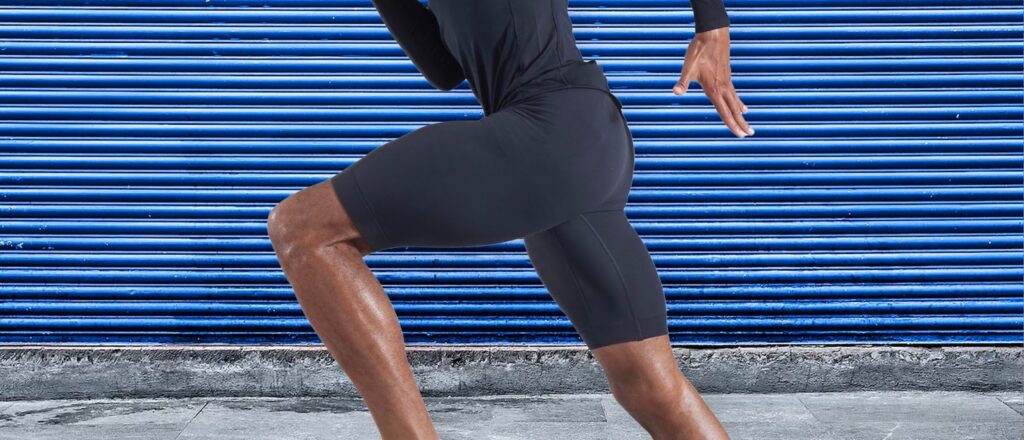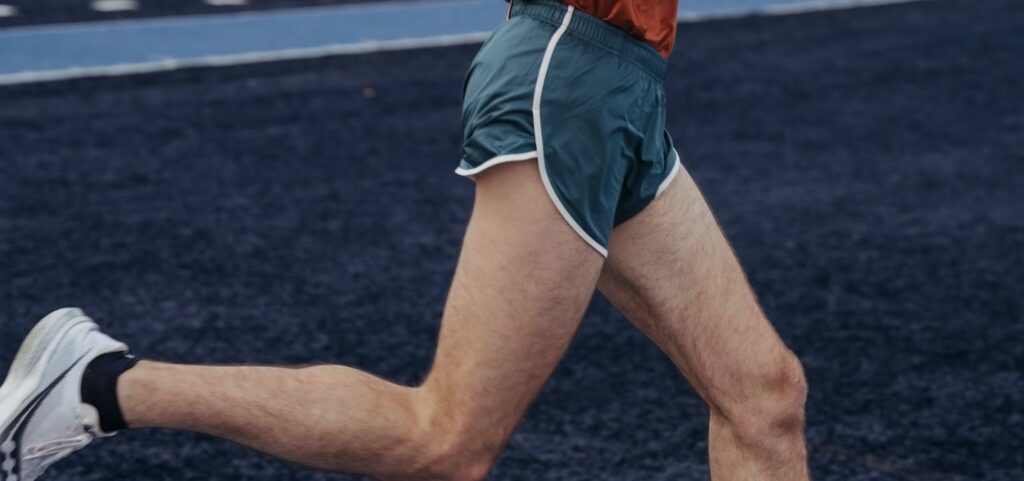Running may be done in a multitude of shorts, but there’s an undeniable allure to specialized running attire. The world of running shorts offers a myriad of options to cater to diverse preferences, appearances, sensations, and performance.
Before you venture into the realm of running shorts, it’s crucial to grasp their fundamental essence.
The Categorization of Running Shorts
The world of running shorts can be dissected into three fundamental categories: compression shorts, split shorts, and v-notch shorts.
1. Compression Shorts

Compression shorts are meticulously designed to not only provide muscular support but also to thwart the dreaded specter of chafing. These shorts have earned favor among runners for their role in enhancing blood circulation and mitigating muscular fatigue.
However, it’s worth noting that their snug fit akin to cycling shorts may not be universally embraced, as some runners find it overly constricting.
2. Split Shorts

Split shorts, characterized by a parting of the fabric on either side, bestow runners with enhanced freedom of movement. They are often constructed from breathable materials, ensuring that you remain cool and dry throughout your run.
3. V-Notch Shorts

V-Notch shorts bear a resemblance to split shorts but boast a distinctive V-shaped notch. In the world of women’s fashion, they tend to be shorter and offer more coverage compared to their split counterparts.
Regardless of your preference, the paramount consideration is securing a well-fitting, comfortable pair of running shorts, aligning them with the prevailing weather conditions. In sweltering conditions, opt for lightweight shorts that facilitate breathability. When the mercury dips, favor the warmth of thicker fabrications like polyester, nylon, or spandex.
Understanding Lined Shorts
Lined Running Shorts vs. Unlined Counterparts
Lined shorts are equipped with an inner lining crafted from moisture-wicking materials, seamlessly integrated into the garment’s interior seam. They are a common fixture in athletic and sports attire.
These shorts excel in moisture management, ensuring that you remain dry and cool during your physical endeavors, in addition to providing valuable support. However, the downside may manifest as a sense of thickness and confinement, particularly if they are excessively tight. The risk of them riding up also looms.
Before you commit to lined shorts, it’s prudent to conduct a trial to ascertain their comfort quotient.
Benefits and Drawbacks of Lined Shorts
Benefits:
- Reduces Chafing: Lined shorts fit closely to the skin and minimize movement, thereby reducing the risk of chafing. This snug fit also eliminates the need for additional underwear, reducing the number of layers you need to wear;
- Moisture-Wicking: The lining in these shorts helps in wicking away sweat, aiding in keeping you cool and dry during physical activities;
- Muscle Support: Different styles of liners provide support to various muscle groups. For instance, boxer-style liners offer support to the quadriceps and glutes, while brief-style liners primarily support the glutes;
- Convenience Features: Many lined shorts come with a small hidden pocket, handy for carrying gels, cash, or a key;
- Gentle Compression: The slight compression provided by lined shorts supports the muscles and helps maintain warmth in them, which is particularly beneficial during long runs or in colder weather.
Drawbacks:
- Potential for Discomfort: Some individuals may find the lining too constrictive, limiting their range of motion;
- Overheating Issues: In warmer conditions, the extra layer of lining can lead to excessive heat, making the shorts feel overly warm and potentially heavy during prolonged runs;
- Difficulty in Wearing: Lined shorts can be more challenging to put on and take off compared to unlined options.
The Virtues of Unlined Shorts
For some individuals, the freedom of wearing shorts devoid of a liner is a comfort that cannot be overstated. With no extra layer of material within, runners can opt for their preferred underwear without fearing chafing.
In colder conditions, runners can pair unlined shorts with tights, a versatility that lined shorts cannot match. Moreover, unlined shorts can endure multiple wearings before necessitating a wash, provided excessive perspiration is kept at bay.
The Pitfalls of Unlined Shorts
Certain runners may shy away from unlined shorts due to concerns about chafing when moisture accumulates, causing skin friction during extended activity. However, this can be mitigated by applying an anti-chafing balm to the inner thighs before running.
Additionally, unlined shorts may leave you feeling chilly in cold weather due to their lack of insulation. The absence of a liner also translates to diminished muscular support, as the compression found in lined shorts is absent.
Lined Shorts vs. Unlined Shorts
Lined shorts, commonly used for running, incorporate a built-in lining designed for moisture management, aiding in keeping the runner cool, dry, and comfortable.
- It’s advised not to wear underwear under running shorts with a liner. An additional fabric layer can lead to chafing and discomfort;
- The liners offer some muscle compression and support, enhancing the comfort and efficiency of running;
- Many runners prefer lined shorts as they eliminate the need for an extra layer and offer muscle support and compression;
- However, some runners choose unlined running shorts over lined ones. This preference often stems from the challenge of finding well-fitting lined shorts, as an improper fit can lead to discomfort and irritation.
This divergence arises from the challenges of finding well-fitting lined shorts, which, if ill-suited, can lead to irritation.
Run After Leg Day?
After an intense leg day session, your muscles may be fatigued, and your legs might feel like jelly. This is where your choice of running shorts can play a pivotal role. Let’s delve into the options:
Lined Shorts: If your priority is muscle support and compression, lined shorts might be your go-to option. They can help reduce the risk of muscle strain and provide warmth to your tired legs. However, if they are too tight, they could add discomfort to your already fatigued state.
Unlined Shorts: On the other hand, unlined shorts offer a more relaxed fit, which might be preferable when your leg muscles are in recovery mode. They allow for greater freedom of movement and breathability. However, if your leg day workout left you sweating excessively, unlined shorts may not wick away moisture as effectively as their lined counterparts.
In the end, the choice between lined and unlined shorts after leg day boils down to personal preference and the specific demands of your workout. Some athletes prefer the snug embrace of lined shorts for the extra support, while others opt for the breezy comfort of unlined shorts.
The Final Verdict
There exists no universal decree governing the choice between lined and unlined shorts. The crux of the matter revolves around acquiring a pair that aligns harmoniously with your physique and personal comfort.
When sifting through the spectrum of running shorts, it’s paramount to factor in the prevailing weather conditions and your individual inclinations.
While lined shorts excel in moisture management, unlined counterparts facilitate superior airflow, ensuring that you remain cool and dry. Both variants serve admirably in the realm of running but effortlessly transition to casual wear, relaxation, or household chores.